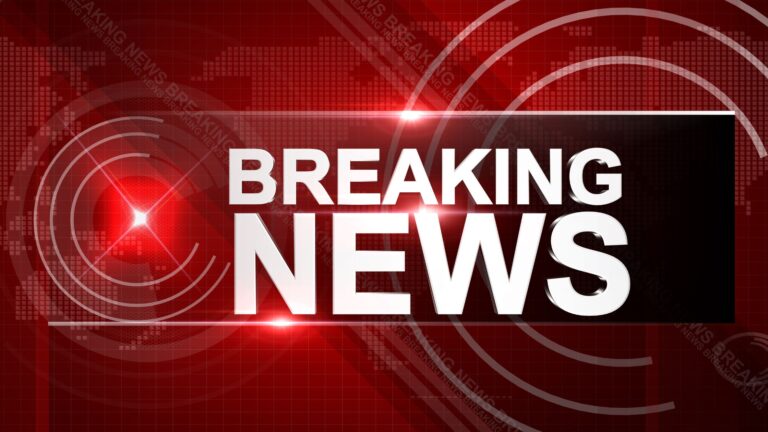Key Takeaways
• Zelensky warns Ukraine may not survive without US military support.
• Sir Keir Starmer pledges British troops may deploy in Ukraine if needed.
• European leaders meet in Paris to tackle growing security concerns.
• US Secretary Rubio heads to Saudi Arabia for high-level talks with Russia.
• Ukraine regains control of a frontline village as Russian forces suffer heavy losses.
• Zelensky demands Ukraine’s involvement in all peace negotiations.
Overview
The situation in Eastern Europe intensifies amid renewed diplomatic and military challenges. Ukrainian President Zelensky has warned that Ukraine’s survival remains at risk without US military support. He stressed that withdrawal of support may lead to severe consequences. Meanwhile, British leader Sir Keir Starmer expressed readiness to send troops to Ukraine if necessary. These assertions come at a time when European and US leaders seek to address mounting security concerns.
UK Involvement in Ukraine
Sir Keir Starmer, the UK leader, declared his strong commitment. He promised that British peacekeeping forces could be deployed. Starmer said he would risk putting his troops in harm’s way. He stated that helping Ukraine would also boost Britain’s security. His comments underline the heavy responsibility of supporting Ukraine. The commitment shows Britain’s willingness to lead. It also strengthens the alliance with Ukraine. The pledge reinforces the collective security framework in Europe.
Zelensky’s Stark Warning
Ukrainian President Zelensky warned that the chances of survival decline significantly without US help. He said US military support is critical for Ukraine. He stressed that the loss of US support would expose the country to grave danger. Zelensky underscored that no leader could negotiate with Putin without Ukraine’s involvement. His strong tone reflects the desperation felt by Ukraine. The president fears an increased risk of Russian aggression. His words have sparked intense debates among international leaders.
European Emergency Talks
French President Emmanuel Macron has organized an emergency meeting at the Elysee Palace. Leaders from the EU and the UK are gathering in Paris. They aim to address Europe’s security challenges. Macron seeks unity amid this crisis. European leaders want to find solutions that reinforce their security. They will focus on addressing shifts in diplomatic dynamics. The talks come after unsettling moves by the Trump administration. The meeting will include key figures from Germany, Italy, Poland, Spain, the Netherlands, Denmark, and the EU. A united stance will be crucial in light of the growing tensions.
US Diplomatic Efforts
US Secretary of State Marco Rubio recently arrived in Saudi Arabia. He is set to meet with Russian officials for peace talks. This visit comes after President Trump ordered high-level preparations for negotiations with Russia. Rubio’s mission includes talks meant to end the ongoing conflict. He and his team will work hard to engage with Russian counterparts. This diplomatic trip may pave the way for broader peace discussions. It also signals the US commitment to resolving the conflict.
Russian Military Claims and Ukrainian Gains
Russia claims its air defence units shot down 90 Ukrainian drones overnight. The operation took place over the Sea of Azov and various regions. This report highlights the ongoing military pressure on Ukrainian forces. Despite these claims, Ukraine made gains on the battlefield. Ukrainian forces recaptured the frontline village of Pischane. The move signals a stall in Russia’s offensive. Reports indicate that Russian casualties remain high. Ukrainian military officials speak of heavy losses. The fighting has inflicted a blow to Russian troop morale.
New Security Architecture Debate
The crisis has fueled calls for a new security architecture in Europe. EU Council President Antonio Costa emphasized Europe’s need to redesign security policies. He said Europeans must lead in determining future security frameworks. Costa noted that Russia remains a global threat. A new approach will need to involve all major concerned parties. The idea is to lessen dependence on US military power. European nations feel they must assume more responsibility. This shift may redefine diplomatic and security strategies on the continent.
Diplomacy Under Pressure
The rising tensions have spurred a wave of rapid diplomacy. The US recently sent a questionnaire to European allies. Officials queried contributions needed for Ukraine’s security guarantees. This effort indicates that European nations must do more and coordinate better. The questionnaire reflects the evolving nature of security talks. Diplomats now engage in multiple high-level communications. Their goal is to ensure a united front against aggressive moves. The dialogue takes place as Russia’s maneuvers grow riskier by the day.
Renewed Concerns Over NATO
A recent interview with Zelensky raised alarms about NATO. The Ukrainian President warned that if the US leaves NATO, Russian influence may extend further into Europe. He mentioned that intelligence revealed about 150,000 Russian soldiers amassing in Belarus. Zelensky warned that Poland, Lithuania, and other allies might be at risk. His words call for major action to support and strengthen NATO’s presence. This discussion further underscores the critical importance of the US role in European security. Each statement moves policymakers to rethink their approaches. The looming threat forces a reexamination of the alliance’s future.
Peace Negotiations and Future Prospects
Zelensky remains firm on Ukraine’s position. He rejected any peace deal that excludes Ukrainian representatives. He made it clear that no agreement would be acceptable unless Ukraine was actively involved. This stance raises challenges for future negotiations. Zelensky stated that Ukraine would not accept sidelines in talks with Russia. The insistence on inclusive dialogue shows Ukraine’s resolve. His comments put pressure on all international actors to redouble diplomatic efforts. A successful peace process in this conflict must include all stakeholders.
Diplomatic Challenges in a Changing World
The unfolding drama presents challenges at many levels. European countries now seek to tailor security architectures to a rapidly changing environment. They must address traditional threats while adapting to new geopolitical realities. The discussions in Paris come at a time of multiple diplomatic shocks. Leaders remain divided and uncertain about the best course of action. Some feel that America’s changing role has left a power vacuum. Others believe that Europe must finally take full charge. These debates have significant consequences for regions far beyond Eastern Europe. The situation tests international alliances and global commitments alike.
Impact on Energy and Resources
The conflict and its aftermath influence global energy and resource markets. President Trump’s remarks on rare earths have raised eyebrows. He said that Ukraine’s rare earths are critical for industrial applications. Both the US and Europe are determined to reduce dependence on China for these minerals. This stance has led to increased competition over resource control. The debate over rare earths and strategic minerals continues to shape international policies. Energy security now intertwines with military and strategic concerns in this volatile era. The issue further complicates diplomatic and military strategies.
Strategic Military Moves
In the midst of diplomatic maneuvers, commanders on the front line remain resolute. Ukrainian forces have gained critical territories in their fight. The recapture of the village of Pischane stands out as an important victory. Russian forces continue to suffer from weakened morale. Their losses understandably slow their advancement. Russian military claims of intercepting drones show efforts to counter the Ukrainian campaign. However, setbacks in the field suggest that Russian progress is under significant pressure. The ongoing operations intensify the overall strategic battles that rage in the region.
Security Risks for European Allies
Zelensky’s warnings also focus on the risk to regional allies. He stressed that the weakening of NATO security may result in dire consequences. President Zelensky said that former Soviet bloc countries face arduous challenges. The risk of Russian occupation or aggression now looms over several nations. His stern message pushes Europe to reassess its security policies. This reassessment includes both diplomatic and practical military measures. Each nation must consider its strategic interests in a complex environment. France, Germany, and even smaller nations are called to take bolder steps. European security cannot rely solely on past alliances or old strategies.
International Media Response
The escalating drama has captured global media attention. Reports and interviews bring a mix of critical views and urgent calls for diplomacy. Analysts frequently emphasize the need for transparency in all talks. They point out that high-level diplomacy must match the demands on the battlefield. Media outlets draw connections between rapid military actions and high-stakes political negotiations. The narrative often emphasizes the real cost of military hesitance. In this context, leaders are compelled to communicate clearly and repeatedly. The international debate continues to shape public sentiment and diplomatic priorities.
Transatlantic Cooperation
The current crisis underscores the need for improved transatlantic relations. European leaders and US officials are working to ensure that strategies align. They coordinate policies on both military and diplomatic fronts. Transatlantic unity remains a key goal for all involved parties. Leaders from both sides insist on working together closely. They weigh the risks of unilateral actions versus coordinated responses. This joint approach is vital for regional and global stability. The renewed focus on cooperation brings fresh hope for a peaceful resolution. Each decision in this period carries weight for future alliances.
Challenges of Modern Warfare
Modern warfare now involves a mix of traditional combat and cyber or aerial tactics. The downing of multiple drones shows evolving battle techniques. Each side adapts quickly to changes in technology and tactics. Ukrainian and Russian forces both utilize modern equipment. These advancements in warfare inform political and security strategies. Decision makers now face the dual challenge of military readiness and diplomatic discussion. As technology reshapes combat, leaders must also update their approaches. The result is a complex fighting landscape that blends the digital and the physical. Both sides continue to push the boundaries in this high-stakes conflict.
Looking Ahead
The coming weeks will be critical in shaping future developments in Eastern Europe. Leaders will meet, debate, and then act decisively. They must address both immediate military needs and long-term security strategies. Zelensky’s warning and Starmer’s pledge suggest a pivot towards more active intervention. European and US officials are compelled to strengthen existing alliances. As diplomatic channels reach unprecedented urgency, all stakeholders must work together. The moves made now will define the shape of Europe’s future. They could also mark a turning point in global security dynamics.
Conclusion
The crisis in Eastern Europe represents an urgent call for unity and decisive action. Zelensky’s warnings, Starmer’s troop pledge, and the emergency talks in Paris form a complex yet necessary narrative. The renewed effort to engage with Russia diplomatically offers a faint glimmer of hope. Nevertheless, the risks remain high and the stakes are enormous. Each leader in Brussels, London, Washington, and Kyiv must contribute actively to a sustainable peace plan. Strategic military moves continue on the ground as peace talks seek to resolve the conflict. Balancing military needs and diplomatic negotiations defines this historic moment. In the end, the survival of Ukraine and the security of Europe depend on these crucial decisions.
The unfolding events present many challenges for Washington, Brussels, and Moscow. They must navigate this maze with care and precision. Each choice carries significant risks and potential rewards. With many lives hanging in the balance, leaders must prioritize collective security. The questions of sovereignty, territorial integrity, and global stability arise repeatedly. The coming days will test the resilience of longstanding alliances. As negotiations evolve, every stakeholder must remain alert. In this turbulent period, unity, decisive action, and strategic foresight will help shape a better future for all.
The debate continues over the best way to secure lasting peace. Leaders from diverse spheres must engage in frank and honest dialogue. They must isolate dangerous unilateral moves and commit to shared strategies. With these coordinated efforts, stability may return to the region. It is now imperative that Europe reaffirms its commitment to collective defense. The urgency of the situation demands immediate and concerted responses. Every decision made today will define the contours of security tomorrow. The challenge lies in finding the right balance between opposing forces. Despite the risks, hope remains that diplomatic efforts will yield positive change.
The world watches as strategic decisions unfold in both military and political arenas. The interplay of actions on the ground and words in negotiation rooms shapes our collective future. Security, democracy, and international cooperation all depend on the results of these events. Leaders cannot afford to ignore the warnings or sidelines of diplomacy. The lessons of recent days stress an enduring truth: unity is strength in turbulent times. As the crisis deepens, every nation must work together. Only through shared responsibility and unwavering commitment will lasting peace emerge.
In the final analysis, Europe faces an unprecedented challenge. The progress of negotiations and the outcome on the battlefield are intertwined. While words and promises stir hope, decisive actions must follow quickly. The journey to peace begins with mutual trust and cooperation. Each actor must respect the principles of sovereignty and shared security. The world awaits the next series of moves with bated breath, hoping that unity and clarity will prevail over conflict.









